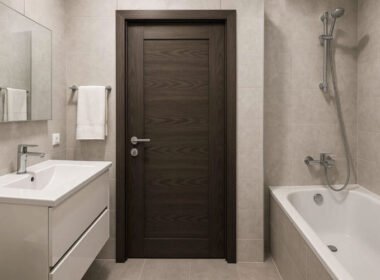In the world of communication technology, radio equipment plays a crucial role in ensuring seamless connectivity, whether for professional, recreational, or emergency purposes. Investing in quality radio accessories can significantly enhance performance, durability, and usability. This comprehensive guide explores essential radio accessories and their specific uses to help you make informed purchasing decisions.
-
Antennas
Antennas are a fundamental component of any radio system. They facilitate signal transmission and reception, playing a crucial role in extending communication range and improving clarity.
Types of Radio Antennas:
- Whip Antennas:Ideal for handheld radios, offering flexibility and portability.
- Yagi Antennas:Commonly used for long-range communication in amateur radio setups.
- Dipole Antennas:Versatile for both indoor and outdoor installations.
- Magnet Mount Antennas:Ideal for vehicles, providing improved range without permanent installation.
Use Case: Emergency responders rely on high-performance antennas to maintain clear communication in challenging environments.
-
Microphones and Headsets
For effective communication in noisy environments or during covert operations, high-quality microphones and headsets are essential.
Popular Options:
- Handheld Microphones:Ideal for dispatchers, allowing easy transmission control.
- Boom Microphones:Favored by military personnel for hands-free operation.
- Noise-Canceling Headsets:Suitable for industrial and aviation applications where noise interference is prevalent.
Use Case: Construction crews benefit from noise-canceling headsets to ensure clear communication in loud work zones.
-
Batteries and Chargers
Radio performance heavily relies on power sources. Investing in reliable batteries and chargers ensures your equipment remains operational during critical moments.
Popular Battery Types:
- Lithium-Ion (Li-Ion):Lightweight, long-lasting, and fast-charging.
- Nickel-Metal Hydride (NiMH):Provides excellent durability and consistent power output.
Charging Solutions:
- Desktop Chargers:Convenient for station-based radios.
- Multi-Unit Chargers:Allow simultaneous charging of multiple devices.
- Vehicle Chargers:Ensure continued power for radios used on the move.
Use Case: Search-and-rescue teams often utilize multi-unit chargers to keep multiple devices ready for action.
-
Mounting Hardware
Properly mounting radios in vehicles, offices, or command centers improves accessibility, durability, and performance.
Mounting Solutions:
- Dash Mounts:For convenient placement in vehicles.
- Wall Mounts:Designed for stationary equipment in control rooms.
- Belt Clips:Portable and accessible for handheld radios.
Use Case: Police officers frequently use belt clips for quick access to communication devices during patrols.
-
Signal Boosters and Repeaters
Signal boosters and repeaters are designed to enhance communication coverage over large distances or in areas with obstacles.
Key Features:
- Wide-Area Coverage:Ensures consistent communication even in remote regions.
- Automatic Gain Control:Prevents signal distortion.
Use Case: Emergency services often rely on repeaters to maintain communications during disaster relief operations.
-
Speaker Systems
External speakers enhance audio output, making them ideal for control rooms, vehicles, or public address systems.
Types of Speakers:
- PA Systems:Ideal for broadcasting messages over large areas.
- Compact Speakers:Portable options for personal or small group communication.
Use Case: Event organizers frequently use PA systems to deliver clear announcements in crowded spaces.
-
Protective Cases and Covers
To safeguard radios from impact, dust, and moisture, protective cases are essential.
Types of Protective Gear:
- Hard Cases:Offer rugged protection for extreme conditions.
- Soft Covers:Provide lightweight protection against dust and scratches.
Use Case: Outdoor enthusiasts use protective cases to prevent damage while hiking or camping.
-
Cables and Connectors
Proper cabling is crucial for connecting radios to power sources, antennas, and other accessories. Durable cables ensure signal stability and performance.
Common Cable Types:
- Coaxial Cables:Used to connect antennas to radios with minimal signal loss.
- Power Cables:Provide secure connections for reliable energy flow.
Use Case: Marine vessels utilize waterproof connectors to maintain functionality in wet conditions.
-
Carrying Solutions
For professionals on the move, carrying solutions such as holsters, pouches, and harnesses improve mobility and accessibility.
Types of Carrying Gear:
- Chest Harnesses:Ideal for keeping radios secure in fast-paced environments.
- Backpacks with Radio Compartments:Suitable for extended outdoor adventures.
Use Case: Security teams often rely on chest harnesses for quick access to radios during crowded events.
-
Programming Software and Cables
Programming software enables users to configure channel settings, frequencies, and security features. Programming cables connect the software to your radio equipment.
Key Benefits:
- Efficient Configuration:Allows bulk programming for multiple devices.
- Enhanced Security:Ensures encrypted communication setups.
Use Case: Industrial facilities rely on programming tools to maintain secure communication networks.
-
Power Inverters and Generators
For extended use in remote locations, power inverters and generators ensure radios stay operational during power outages or in off-grid conditions.
Use Case: Field researchers working in remote areas depend on portable generators to power their communication equipment.
Final Thoughts
Choosing the right radio accessories is essential to maximizing performance, reliability, and user convenience. Whether you are a first responder, outdoor adventurer, or business professional, investing in the appropriate accessories will ensure clear and consistent communication in any scenario.
When selecting accessories, consider factors like durability, compatibility, and environmental conditions. Quality accessories can significantly enhance the functionality of your radio equipment, ensuring that you stay connected when it matters most.










